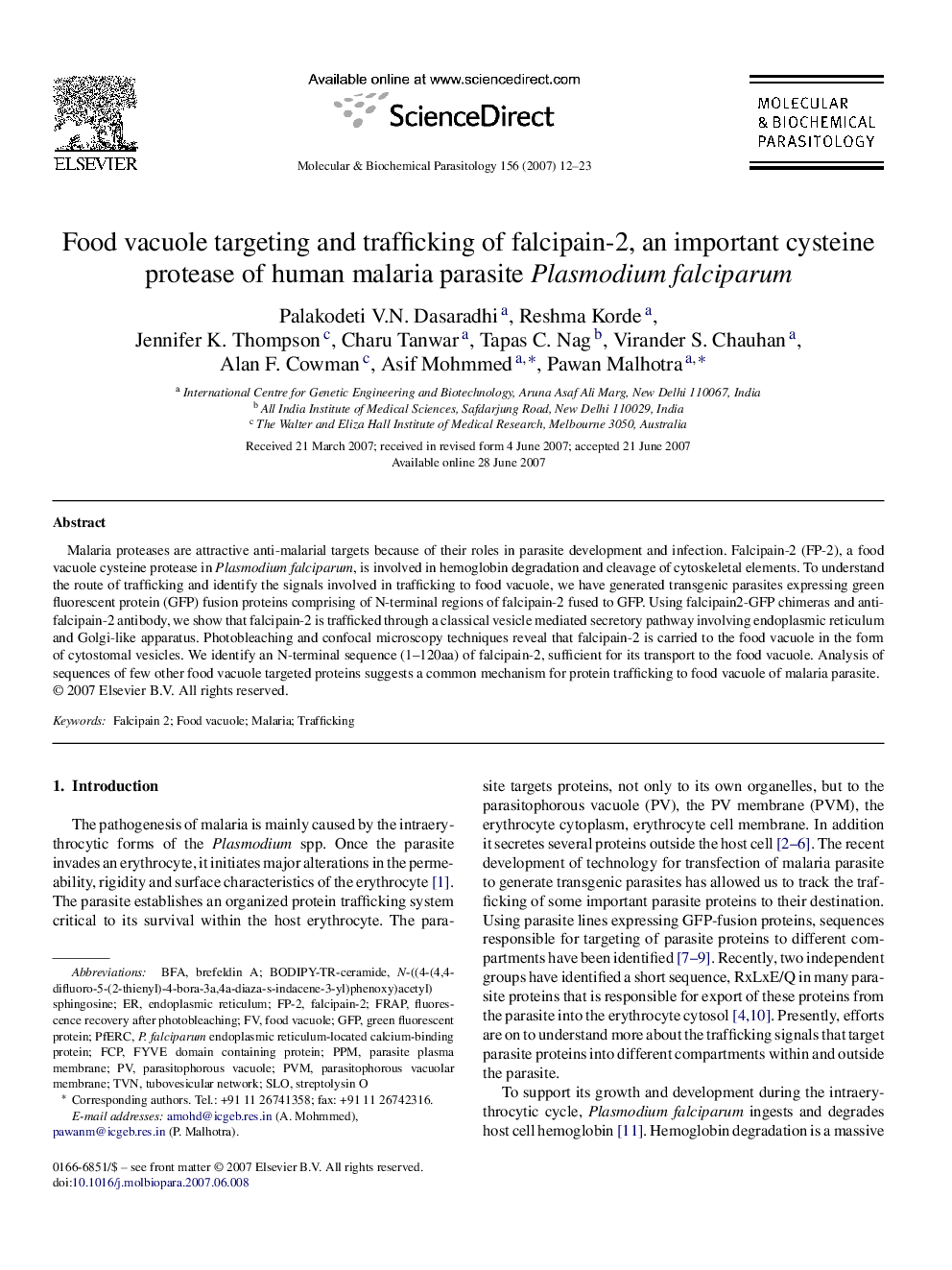| Article ID | Journal | Published Year | Pages | File Type |
|---|---|---|---|---|
| 2830145 | Molecular and Biochemical Parasitology | 2007 | 12 Pages |
Malaria proteases are attractive anti-malarial targets because of their roles in parasite development and infection. Falcipain-2 (FP-2), a food vacuole cysteine protease in Plasmodium falciparum, is involved in hemoglobin degradation and cleavage of cytoskeletal elements. To understand the route of trafficking and identify the signals involved in trafficking to food vacuole, we have generated transgenic parasites expressing green fluorescent protein (GFP) fusion proteins comprising of N-terminal regions of falcipain-2 fused to GFP. Using falcipain2-GFP chimeras and anti-falcipain-2 antibody, we show that falcipain-2 is trafficked through a classical vesicle mediated secretory pathway involving endoplasmic reticulum and Golgi-like apparatus. Photobleaching and confocal microscopy techniques reveal that falcipain-2 is carried to the food vacuole in the form of cytostomal vesicles. We identify an N-terminal sequence (1–120aa) of falcipain-2, sufficient for its transport to the food vacuole. Analysis of sequences of few other food vacuole targeted proteins suggests a common mechanism for protein trafficking to food vacuole of malaria parasite.
